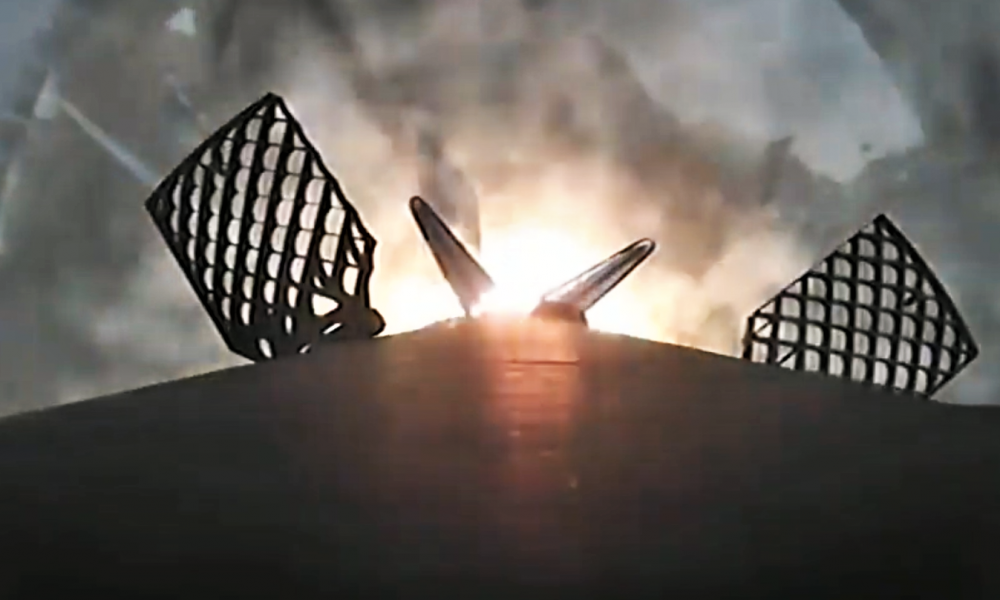
Falcon 9's Raw, Rear Facing Re-Entry (Sound On)
Share
SpaceX's SAOCOM-1B mission was guided into orbit by one of SpaceX's Falcon 9 rockets on August 30th, 2020.
Nothing out of the ordinary to see here, right?
Riiiiiight?
Except that the camera isn't stationed a few kilometres away from Cape Canaveral as they do.
Or that the camera wasn't showing the path ahead of the rocket as it ascends into space.
This time the camera was placed in a rear-facing position on the first stage of the rocket, so we can see the trailing parts and the wake of the rocket.
It captures the launch, reentry, and touchdown Landing Zone (LZ-1) in Florida.
The entirely uninterrupted footage shows the exact process of how the booster makes the seemingly impossible a reality.
Watch the raw, time-lapse here footage here:
Assuming you saw the whole thing, you're probably thinking...
Wtf was that thing spinning around at 40 seconds in??
It seems weird, but there's a very simple explanation.
Aliens...
Kidding.
It's the fairing that protects the satellites during launch.
Plus there's a nifty little extra too.

Rockets are powered by a combination of super-cooled liquid hydrogen and liquid oxygen as their fuel. This fuel is much colder than the temperature of the air surrounding the shuttle and the difference causes water vapour in the air to condense on the outside of the fuel tank.
As water continues to collect freeze into patches of ice on the outside of the rocket, the intense forces during launch cause the ice chunks to fall away.
A play-by-play of the video.

Before liftoff, the Merlin engines of the first stage ignite and Falcon 9 puts out approximately 589670.081kg of thrust. Within 70 seconds in real-time (12 seconds into the video), the craft is supersonic and is shown as the rocket hits maximum aerodynamic pressure as the wake of the rocket propulsion is at its highest. This pressure is a combination of the rockets thrust and the resistance in our atmosphere and can be seen in the video as the higher altitude air is displaced much easier.
At about 158-160 seconds in (again, real-time), the Falcon 9 booster is 80km high and travelling at ten times the speed of sound.
Now first stage engines cease in a process called "main-engine cutoff" or MECO. Three seconds after MECO the first and second stages separate, during the Boostback Burn process 20 seconds into the video. Separation can't be seen as the camera is facing away, but its when the engines stop and you get that "space" vibe from the change in observational physics.

This is where the floating sequence starts and the automatic Draco thrusters and hypersonic capable titanium grid fins (yep they're both real things) begin to orientate the Falcon 9 booster toward the reentry pathway back to Earth.
Upon re-entry into Earth's atmosphere, Falcon 9 reignites to slow the descent and safely return. You can see the fins manoeuvre to account for movement in the air like pressure and turbulence during the Reentry Burn process.
The final Landing Burn process deploys the legs and Falcon 9 makes its fourth successful round trip.
Clint has gone a bit MIA...

Just wanted to let you know that we have
Snag a mask and tee to stop the spread!
Kathy from HR
Like our little informational piece about rocketry?
Share with a friend who would be blown away and follow our social media at the links below.
See you next time!
#Space_Aus




